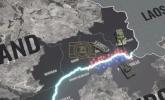אלעס ארום די מלחמה צווישן קאמבאדיע און טיילאנד


The roots of the Thailand–Cambodia border conflict lie deep in the region’s colonial history. The Franco-Siamese treaties of the early 1900s, meant to define the boundary between French-controlled Cambodia and the Kingdom of Siam (now Thailand), left many disputed zones, particularly around culturally significant ancient temples.
Among the most contested sites were Prasat Ta Muen Thom and areas surrounding Preah Vihear, both of which became symbols of national pride and strategic importance for both nations. These long-standing disputes simmered under the surface for decades, occasionally flaring into brief border tensions.
As 2025 began, unease was already growing along the border. The tipping point came on May 28, when gunfire broke out at the Emerald Triangle. A Cambodian soldier was killed in the exchange, and both governments quickly blamed each other for the outbreak of violence.
By June 7, the situation intensified. Thailand began fortifying its positions and accused Cambodian troops and civilians of repeated provocations. In response, border crossings were closed, and civilians living near the frontier found themselves caught in a growing militarized zone.
Throughout June and July, tensions rose with minor skirmishes becoming more frequent. Both armies remained on high alert, and military activity ramped up across the contested region.
The conflict reached a critical point on July 24, just before dawn. Thai forces reported the presence of Cambodian surveillance drones near Prasat Ta Muen Thom, raising alarm. Soon after, a Cambodian patrol of six armed soldiers was spotted near a Thai base.
At around 6:30 a.m., gunfire erupted again.
Each side blamed the other for the renewed violence. Cambodia alleged that Thailand launched an unprovoked assault, while Thailand insisted that Cambodian forces fired first near the temple.
By 9:40 a.m., the conflict had escalated significantly. BM-21 rocket salvos were fired from Cambodian territory towards Prasat Don Tuan, endangering nearby civilian areas.
Minutes later, the fighting spread near Ta Kwai Temple, with more clashes reported.
Then, at exactly 10:58 a.m., the situation escalated to full-scale warfare. Royal Thai Air Force F-16 fighter jets struck Cambodian military targets at Chong An Ma, claiming to have destroyed key command posts.
As the day progressed, the fighting intensified and expanded, engulfing several kilometers of the Thailand–Cambodia border. Artillery shells, rockets, and airstrikes transformed the region into an active war zone. Civilians were caught in the crossfire, and both nations saw significant military engagement unlike any seen in recent years.
This rapidly unfolding situation has raised alarm across the region and internationally, as diplomatic efforts struggle to catch up with the speed of the conflict's escalation.
גאלערי
ווידעאס